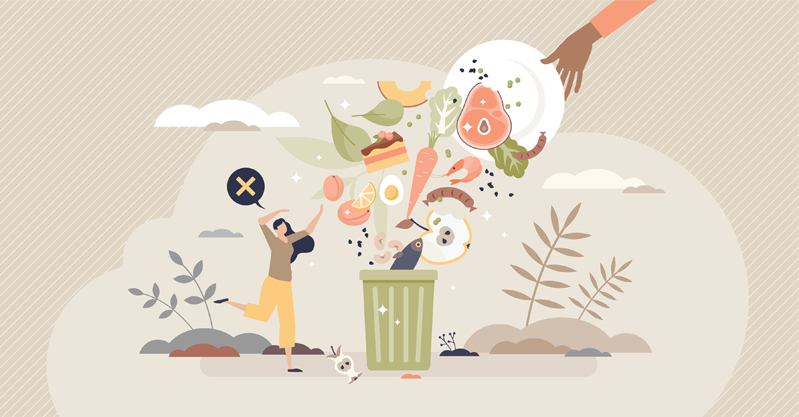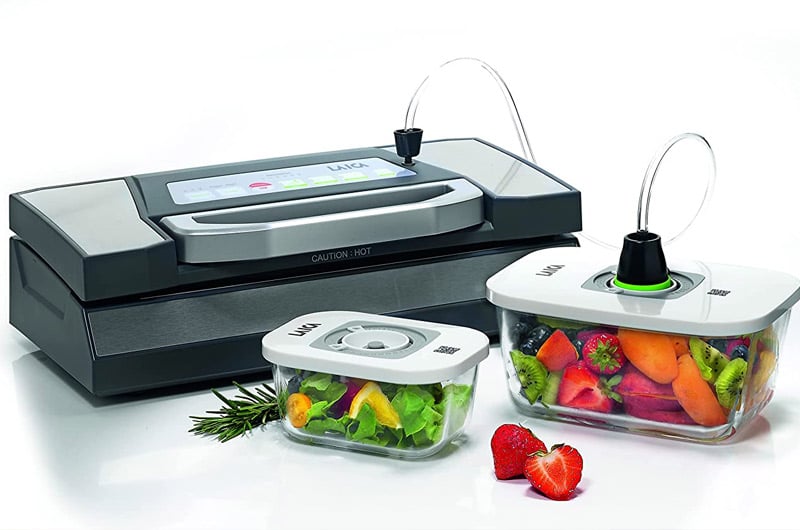Laica Blog
How to reduce food waste with the Food & Agriculture Organisation's tips
It is a sin to throw away food, we all know this, and yet according to recent UN data it is something which we do all the time and which generates an incredible annual volume.
Food waste occurs in a number of different ways: from production to the end consumer, every step of the food distribution chain contributes to the amount of food that is wasted or thrown out.
As we have already mentioned, this waste has a cost to society: an analysis of the environmental impact of the production and distribution of wasted food reveals some painful and astonishing numbers.
Food waste generated by the end consumer

Why is it, for example, that we sometimes open our fridge and find that some of the foodstuffs have gone off and, unfortunately, have to be thrown away? Why do we promise ourselves that it won’t happen again only to find that, even if we are careful, history repeats itself after just a few weeks? In Italy alone, around 5 million tonnes of food are thrown away every year (around 70 kg of food per person, including babies). An alarming figure that we can and must look to reduce, to lessen the societal impact.
There may be many different reasons for this sort of food waste: with the hectic pace of daily life, many consumers go to the supermarket and fill their trolleys with whatever catches their eye at the time or they are influenced by the many special offers available, losing sight of the real needs of themselves and their families.
This often results in excessive amounts of food which could never be consumed before their expiry dates, meaning it is destined to end up in the dustbin.
Another reason for why end consumers generate food waste can be found in how the food is stored, particularly fresh food such as cheese, fruit, vegetables, bread, and meat.

Fridges (and freezers) help to extend the life of foodstuffs which, if left on the worktop at room temperature, would only last for a few hours, quickly going off. However, fridges are not a silver bullet for preserving food forever, even the “cold” generated around foodstuffs has well defined limits.
The storage container or the wrapping are often underestimated: for example, if a tub containing a leftover chicken breast is not closed properly before being put in the fridge the food will rapidly deteriorate in the next 24 hours.
The same goes for cured meat which, if exposed to the air, will go dry and hard. Or vegetables such as carrots and courgettes which have a tendency to go soft in just a few days or become covered in mould on the outside.

End consumer food waste could be dramatically reduced by paying more attention to the storage methods: a well-sealed container which is the correct size for the volume of food it contains, with the option for vacuum storage, is handy, reusable, easy to clean and is a simple way to extend the lifespan of food.
The FAO tips for reducing food waste
When the FAO announced the International Day of Awareness of Food Loss and Waste, now in its third year (find out more about LAICA’s project to mark this important day), the UN Food and Agriculture Organisation also published a handy guide to 15 ways to reduce food waste in our homes.
The guide is of course very topical and covers the following points:
- Adopt a healthier, more sustainable diet: even though we live fast-paced lives, the importance of preparing healthy meals should not be overlooked. Fortunately, the internet is full of quick healthy recipes that you can share with your family and friends.
- Only buy what you need: before you go to the supermarket, make a shopping list and stick to it, and avoid impulse buys. Not only will you waste less food, you’ll also save money!
- Buy ugly fruit and vegetables: they are often thrown away because they don’t meet arbitrary cosmetic standards, but don’t worry, they still taste the same! You can use the fruit for smoothies, fresh juice and desserts.
- Store food wisely: order the produce in your cupboard or fridge, moving older products to the front and putting newer things at the back (FIFO - First In, First Out). Use airtight containers to keep open food fresh and ensure that packets are closed to stop insects from getting in.
- Understand food labelling: there is a big difference between “best before” and “use by” dates. Food is almost always safe to eat after the “best before” date whereas it is the “use by” date which tells you that food is no longer safe to eat.
- Small portions: try to buy smaller portions to eat at home, whilst if you go to a restaurant where you know the portions are big, try sharing them with friends! And if something is left over, don’t leave it on your plate but politely ask the restaurant staff for a container so you can take the leftovers home.
- Love leftovers: leftovers can be used as an ingredient in another recipe or stored in the fridge or freezer. If you don’t eat it all, rather than throwing it away, try to store it.
- Make use of waste: if you cannot reuse them in another recipe, make good use of the waste you generate. Instead of throwing it away, you could make compost. This helps to return nutrients to the soil and reduce your carbon footprint.
- Respect food: food connects us all. Re-connect with the food that you are eating or cooking, try to learn more about how it is produced. Find out more about farmers, countries, and trade.
- Support local producers: by buying produce from your region, you are supporting family farmers and small businesses in your community. Not only that, by doing so you are contributing to combating pollution and reducing food miles for lorries and other vehicles.
- Respect for fish populations: eat fish species that are more abundant (mackerel, herring) and avoid those at risk of overfishing, such as cod and tuna.
- Use less water: you cannot produce food without water! Whilst it is important that farmers use less water to cultivate their fields, reducing food waste also saves all of the water resources used to produce that food. How else can you save water? By promptly repairing leaks and turning off the tap while brushing your teeth.
- Keep our soils and waters clean: be careful because some household waste can be harmful and should not be thrown in the regular rubbish bin. These include items such as batteries, paint, mobile phones, medicines, chemicals, fertilizers, tyres, and printer cartridges. They contain substances which can get into the ground and the water, damaging entire ecosystems that produce food.
- Eat more pulses and vegetables: at least once a week try to eat a meal based on pulses or “ancient” grains such as quinoa.
- Sharing is caring: if you can't eat it all, donate food that you would otherwise throw away. For example, you can use apps which connect neighbours with each other or with local businesses to share surplus food.






It's your turn, leave your comment!
Get the latest from the Laica blog